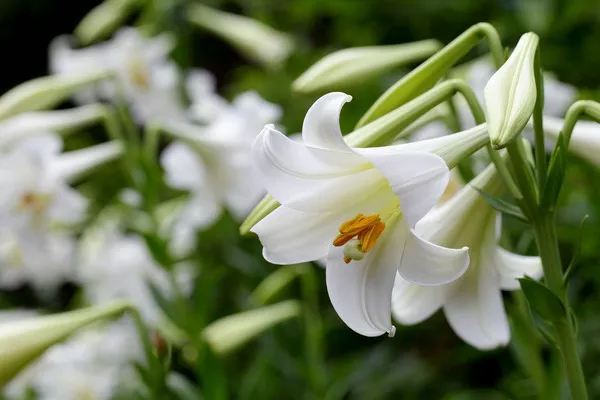Peace lilies (Spathiphyllum spp.) are renowned for their elegant white blooms and lush foliage, making them a popular choice for indoor gardening enthusiasts. However, despite their reputation for being relatively low-maintenance, peace lilies can sometimes be stubborn when it comes to flowering. If you find yourself in the perplexing situation of owning a peace lily that refuses to bloom, fear not. In this comprehensive guide, we will delve into the potential reasons behind this phenomenon and provide practical solutions to help coax your peace lily into a glorious display of blossoms.
Understanding the Peace Lily: A Botanical Overview
Before we dive into troubleshooting, let’s take a moment to understand the nature of the peace lily plant. Native to the tropical regions of the Americas, peace lilies belong to the Araceae family and thrive in warm, humid environments with filtered sunlight. These evergreen perennials are prized for their glossy, lance-shaped leaves and distinctive white flowers, which resemble a delicate sailboat drifting atop a sea of greenery.
Peace lilies are typically grown as houseplants due to their tolerance for low light conditions and their ability to purify indoor air by removing toxins such as formaldehyde, benzene, and trichloroethylene. While they are relatively undemanding in terms of care, peace lilies do have specific requirements for optimal growth and flowering.
Factors Affecting Flowering in Peace Lilies
Several factors can influence the flowering behavior of peace lilies, ranging from environmental conditions to cultural practices. By identifying and addressing these factors, you can encourage your peace lily to bloom and thrive.
1. Insufficient Light
One of the most common reasons why peace lilies fail to flower is inadequate light exposure. While peace lilies can tolerate low light conditions, they still require a sufficient amount of indirect sunlight to trigger blooming. Inadequate light can result in reduced photosynthesis, which in turn hampers the plant’s ability to produce flowers.
Solution: Place your peace lily in a location where it can receive bright, indirect sunlight for at least six to eight hours per day. Avoid exposing it to direct sunlight, as this can scorch the leaves and cause sunburn.
See Also: How to Plant Lily Flower?
2. Improper Watering
Overwatering or underwatering can both negatively impact the flowering of peace lilies. Excessive moisture can lead to root rot, while drought stress can cause the plant to conserve energy and prioritize survival over flowering.
Solution: Water your peace lily consistently, allowing the top inch of soil to dry out between waterings. Use tepid water and avoid letting the plant sit in standing water, as this can lead to root suffocation. A well-draining potting mix will help prevent waterlogged conditions.
3. Nutrient Deficiencies
Peace lilies require adequate nutrients to support healthy growth and flowering. A deficiency in essential nutrients such as nitrogen, phosphorus, and potassium can hinder flower production and overall plant vigor.
Solution: Feed your peace lily regularly with a balanced liquid fertilizer formulated for houseplants. Follow the manufacturer’s instructions for dilution and application frequency to avoid overfertilizing, which can result in fertilizer burn.
4. Container Size and Root Bound
If your peace lily has outgrown its container, it may become root bound, meaning its roots have filled the pot and have no room to expand. Root-bound plants may exhibit stunted growth and reduced flowering capacity.
Solution: Repot your peace lily into a slightly larger container with fresh potting mix, taking care not to damage the roots during the transplanting process. Choose a pot with adequate drainage holes to prevent waterlogging.
5. Environmental Stressors
Environmental factors such as temperature fluctuations, drafts, and exposure to air pollutants can stress peace lilies and inhibit flowering. Peace lilies prefer stable, moderate temperatures and high humidity levels.
Solution: Place your peace lily away from drafty windows, air vents, and doors that may cause temperature fluctuations. To increase humidity, mist the foliage regularly or place the plant on a pebble tray filled with water.
6. Reproductive Rest Period
Like many flowering plants, peace lilies undergo a period of reproductive rest after blooming, during which they redirect energy towards root and foliage growth rather than flower production. This rest period is a natural part of the plant’s growth cycle and may last several weeks to months.
Solution: Be patient and allow your peace lily to rest and recuperate after flowering. Continue to provide proper care and maintenance, and flowering should resume once the plant has replenished its energy reserves.
7. Age of the Plant
Young peace lily plants may take several years to reach maturity and begin flowering. If your peace lily is still in its juvenile stage, it may simply need more time to develop before it can produce blooms.
Solution: Continue to care for your peace lily and provide optimal growing conditions to support healthy growth and development. With time and patience, your plant will eventually reach maturity and reward you with beautiful flowers.
Conclusion
While a non-flowering peace lily can be frustrating, it’s essential to remember that these plants are living organisms with specific needs and preferences. By addressing potential issues such as inadequate light, improper watering, nutrient deficiencies, and environmental stressors, you can encourage your peace lily to bloom and thrive. Remember to be patient and attentive to your plant’s needs, and soon you’ll be rewarded with a stunning display of white flowers that will brighten any indoor space.


